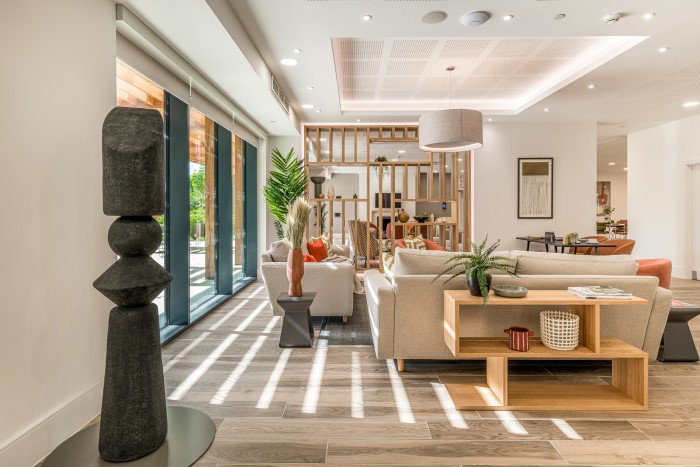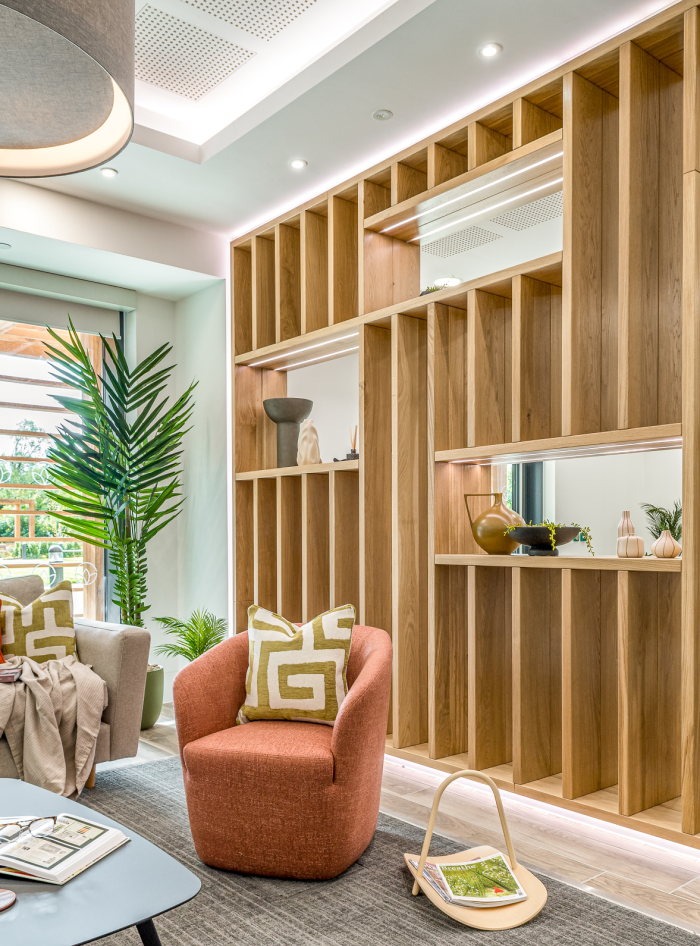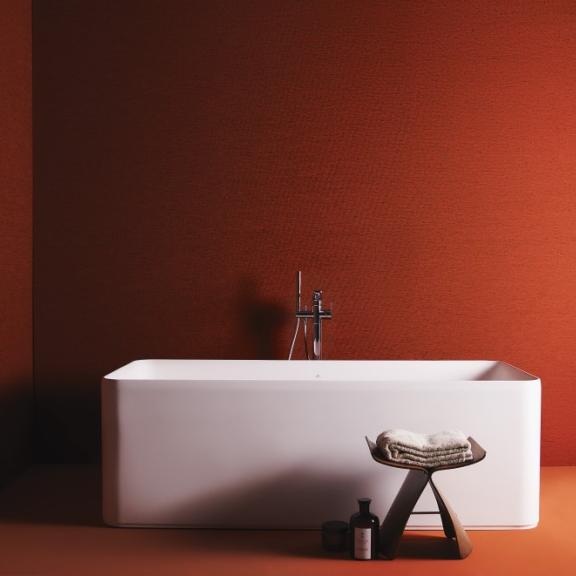Designing with age in mind
An ageing population means designing spaces with longevity and accessibility in mind. BIID registered interior designer Christopher Taylor advises on designing for ageing

Every country around the world has a growing number and proportion of older people in the population, according to the World Heath Organization. It’s a trend which interior designers will want to understand and react to, including when undertaking commissions for residential clients and for the developers of retirement communities, and when working on projects for other spaces in order to make them age inclusive.
We talked to BIID registered interior designer Christopher Taylor of Marchini Curran Interiors about the project the practice has undertaken for Mayfield Villages. Mayfield Watford Retirement Village in Hertfordshire consists of 255 one and two bedroom retirement apartments, along with a café bistro, beauty treatment rooms, communal gardens and other leisure facilities. The practice was commissioned to develop a new interior concept for the contemporary and vibrant environment. We asked Christopher about the project and designing with age in mind.

What does designing with age in mind mean to you?
It is important to us as designers to create spaces that are appropriate to the specific needs of the users, whether it is a laboratory for life sciences or an integrated retirement community for older people, we put the needs of the users first.
Can you tell us about the Mayfield Villages interior concept. What were your aims and how does it differ from stereotypic senior living developments?
There is a real and recurring negative stigma associated with designing for older people. We attended the Later Living conference in London recently, and a quote that really resonated with us was that ‘old people are just us, but older’. Addressing this issue was important to us when we started the design process and we made a conscious effort to begin with a blank piece of paper, approaching our design without preconceptions, avoiding stereotypes and firmly placing the prospective owners at the centre of our focus.
That is not to say that we were ignorant of the other brands in the market; in fact we undertook an exhaustive review of the competition within the UK and further afield to Australia and New Zealand, for example, where integrated retirement communities are much more prevalent. The most informative market research we undertook, however, was directly with the target demographic in person, whereby they were exposed to a wide range of visual stimuli depicting different types of interior design and their reaction to these was invaluable to us. The new interior brand we have created for Mayfield Villages is a direct reaction to this market research, delivering light and bright spaces made up of contemporary clean lines and minimalist styling. 
Thinking of clients of residential projects, from what age range would you suggest a focus on ageing in place becomes important?
A common mistake made in this country is that we design buildings and interiors for a very specific function or age group. Here at Marchini Curran Interiors, however, we look to design flexible and sustainable spaces that can be easily adapted to the changing needs of society, and the people that use those spaces. This way we don’t need to rip out and start again at huge expense to the environment and to the client. In the context of designing for residential projects, it is important to us to futureproof our interiors to remain appropriate for longer by introducing at day one the infrastructure for spaces to be adapted to the changing needs of the users.
What elements are most crucial for a design
with age in mind?
A sensitivity to the changing needs of our bodies is important when designing with age in mind. However, interiors do not need to overtly scream that they are designed for age in mind, and the interventions can be much more subtle. For example, the modern café bistro at Mayfield Watford has a range of different seating heights to suit a wide spectrum of users with a high proportion of these chairs having arms and the table bases are particularly heavy, both to aid leverage when standing up, but these details are not obvious at first glance.
As well as the physical considerations, it is important to be aware of the impact on our senses as we get older. Our market research unearthed a desire for light and bright spaces that were easier on the eye, and although the demographic proved to be very sociable, we were conscious of designing spaces that appealed to both extroverted and introverted people, with a sensitivity to good acoustics at the forefront.

What are particular features of kitchens and bathrooms that are important for ageing in place?
If we take bathrooms as an example, a well designed wet room can be an ideal solution for all ages. Not only does the continuous step-free floor of a wet room look great, it also avoids any trip hazards in later life and also facilitates unfettered access for individuals with reduced mobility or who require assistance in the form of walking aids or wheelchairs.
There are some very clever manufacturers on the market now, such as HEWI, which makes products that are not only aesthetically pleasing but that also provide the added functionality required such as grab rails when our bodies start to naturally deteriorate and we need a little extra support.
Related resources:
Shape the BIID's future by standing for the Council of Directors at this years AGM.
BIID Platinum Partner Ideal Standard discuss how designers can best use their Atelier Collection.
Discover the BIID's progress with the 2021-2024 sustainability strategy
Don't miss the return of the BIIDs annual members event.
BIID President May Fawzy introduces the new three year strategic plan
The BIID Student Drawing Competition has now launched for 2024






